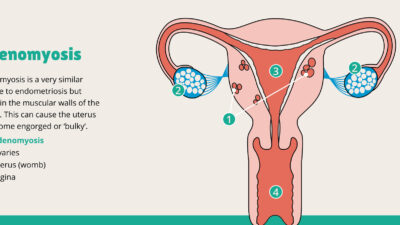What is Acute Myeloid Leukemia (AML)?
Acute Myeloid Leukemia (AML) is a fast-growing blood cancer that starts in the bone marrow – the soft, spongy tissue inside bones where blood cells are made. In AML, the bone marrow produces abnormal white blood cells called myeloblasts that don’t develop properly and crowd out healthy blood cells.
Table of Contents
Acute Myeloid Leukemia Symptoms
AML symptoms often appear suddenly and worsen quickly. They result from the lack of healthy blood cells:
Common Symptoms
- Fatigue and weakness (from anemia)
- Frequent infections (from low white blood cells)
- Easy bruising or bleeding (from low platelets)
- Fever (often without obvious infection)
- Shortness of breath (especially during activity)
- Pale skin (due to anemia)
- Bone or joint pain
Less Common Symptoms
- Swollen gums (especially in monocytic AML)
- Skin rashes or spots (petechiae)
- Enlarged liver or spleen
- Unintended weight loss
Diagnosing Acute Myeloid Leukemia: Tests and Procedures
Initial Blood Tests
| Test | Purpose | AML Findings |
|---|---|---|
| Complete Blood Count (CBC) | Measures blood cells | Low red cells, platelets; high/low white cells |
| Peripheral Blood Smear | Examines blood cells under microscope | Immature blast cells visible |
Definitive Diagnostic Tests
- Bone Marrow Aspiration and Biopsy
- Gold standard for AML diagnosis
- Sample taken from hip bone
- ≥20% blasts confirms AML diagnosis
- Genetic Testing
- Cytogenetics: Chromosome analysis
- Molecular testing: Specific gene mutations
- Flow cytometry: Cell marker analysis
AML Classification and Genetic Markers
WHO Classification System
- AML with recurrent genetic abnormalities (best prognosis)
- AML with myelodysplasia-related changes
- Therapy-related AML (from previous cancer treatment)
- AML not otherwise specified
Key Genetic Mutations
| Mutation | Prognosis | Treatment Implications |
|---|---|---|
| t(8;21) | Favorable | Standard chemotherapy |
| inv(16) | Favorable | Standard chemotherapy |
| t(15;17) | Very favorable | ATRA + arsenic trioxide |
| NPM1 | Favorable | May not need transplant |
| FLT3-ITD | Unfavorable | Targeted therapy needed |
Acute Myeloid Leukemia Treatment
Phase 1: Induction Therapy
Goal: Achieve remission (no detectable cancer cells)
- “7+3 regimen”: 7 days cytarabine + 3 days anthracycline
- Hospital stay: 4-6 weeks for treatment and recovery
- Success rate: 60-80% achieve initial remission
Phase 2: Consolidation Therapy
Goal: Prevent relapse
- Options:
- High-dose cytarabine (4 cycles)
- Stem cell transplant (for high-risk patients)
- Duration: 4-6 months
Targeted Therapies
- FLT3 inhibitors (midostaurin, gilteritinib)
- IDH inhibitors (ivosidenib, enasidenib)
- BCL-2 inhibitors (venetoclax) – especially for elderly
Special Case: APL Treatment
- ATRA (all-trans retinoic acid) + arsenic trioxide
- Highest cure rate of all AML subtypes (90%+)
- Medical emergency due to DIC risk
Acute Myeloid Leukemia Prognosis and Survival Rates
Factors Affecting Prognosis
- Age (most important factor)
- Genetic mutations
- Overall health
- Response to initial treatment
5-Year Survival Rates by Age
| Age Group | Survival Rate |
|---|---|
| <20 years | 65-70% |
| 20-49 years | 50-55% |
| 50-64 years | 35-40% |
| 65+ years | 10-15% |
FAQ About Acute Myeloid Leukemia
Q: Is AML hereditary?
A: Most AML cases are not inherited. However, some genetic syndromes can increase risk.
Q: What’s the difference between AML and ALL?
A: AML affects myeloid cells (future granulocytes, monocytes), while ALL affects lymphoid cells (future lymphocytes).
Q: Can AML be cured?
A: Yes, especially in younger patients with favorable genetics. Cure rates exceed 70% in some subgroups.
Q: How quickly does AML progress?
A: AML progresses rapidly. Without treatment, most patients would survive only weeks to months.
Q: What causes AML?
A: Exact cause is unknown, but risk factors include previous chemotherapy, radiation, certain chemicals, and some blood disorders.
Q: Can AML come back after treatment?
A: Yes, relapse is possible. Stem cell transplant may be recommended for high-risk patients to prevent relapse.



